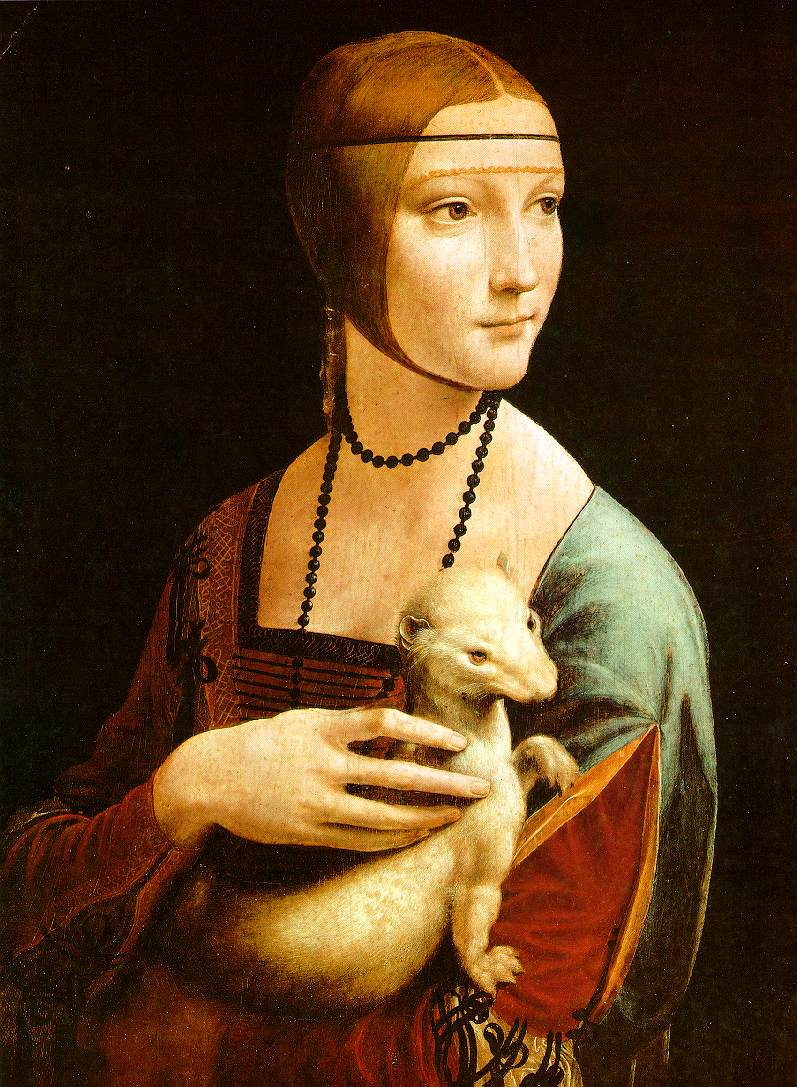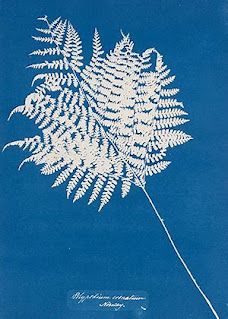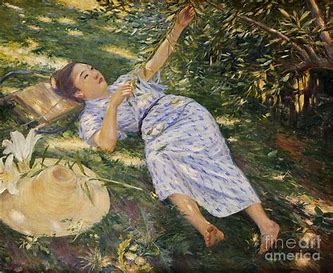Renaissance Blog
I chose Leonardo da Vinci's painting Lady with an Ermine for this week's blog. My fascination with this painting has remained strong since my childhood, and I consider it superior to the Mona Lisa in terms of Humanism as per definition. Lady with an ermine is a portrait of Cecilia Gallerani, the mistress of Ludovico Sforza, Il Moro, Duke of Milan. The oil painting was created by Leonardo da Vinci in 1489-1491 and had dimensions of 53.4x39.3 cm (21x15 1/2 inches). Leonardo da Vinci was commissioned by Ludovico Sforza to paint a portrait of Ludovico’s 17-year-old mistress. It is currently displayed at the Czartoryski Museum in Krakow, Poland. "It is an oil painting on a walnut wood panel featuring a young woman holding an ermine."(Lady with an Ermine, n.d.)
The painting represents an excellent example of the Sfumato and chiaroscuro technique with the light source coming from the right side of the painting and highlighting the model's cheekbones and softly falling on her right shoulder and her pet ermines head. The portrait has a triangular structure that repeatedly appears through the model and animal poses, and it's also visible in the Finestrella sleeve form of the model's dress. The model is caught mid-movement with her torso turning to the right of the painting, which is a revolutionary pose considering the trend of static posing in the medieval and early relicense eras. The head of the oversized white ermine gently leaning on the right side of her chest. Unfortunately, the portrait was vandalized while it was in the possession of Izabela Czartoryski. "The background, formerly light and blue, which was painted over in black in the 19th century by order of the then owner Izabela Czartoryski (1494-1547)..."(Petry, n.d.) Also, her translucent hair cover was painted the color of her hair, which resulted in the confusing image of her hair being held together under her chin.
The pet ermine is a symbol of loyalty, purity, and honor, which is a lovely homage to medieval traditions. "Ludovico Sforza was often called “the White Ermine” due to the fact that in 1488 he had been granted the Order of the Ermine - a type of knighthood - by the King of Naples."(Bik, n.d.) The ermine head resting closely to Cecilia's heart might be Leonardo da Vinci's playful wink at the not-so-secret love affair.
This portrait is truly revolutionary and very much in attunement with the philosophy of Humanism. It showcases Cecilia Gallerani's personality and allows us a glimpse of a young, intelligent woman, caught mid-movement turning to the light source (her lover?) with a gentle smile, benevolent interest, and curiosity. It certainly permeates time and space and shows a woman happily in love that everyone can relate to.
I would not like to own a copy of The Lady with an Ermine painting because the copies are not able to reproduce the visionary and extraordinary work of art Leonardo da Vinci created. This painting's backstory is extensive. I consider it the first feminist portrait of a teenage girl who not only managed to overcome a dangerous and scandalous social situation but was able to secure the noble last name Sforza for her illegitimate son and prosper later in life.
Resources Cited:
Bik, Katarzyna. “Behind the Mystery of the Lady with an Ermine - Google Arts & Culture.” Google Arts & Culture, Google, artsandculture.google.com/story/behind-the-mystery-of-the-lady-with-an-ermine-the-national-museum-in-krakow/LAWRkq8iKEKGJA?hl=en#. Accessed 18 Feb. 2024.
“Lady with an Ermine (1483-1490) by Leonardo Da Vinci.” Artchive, www.artchive.com/artwork/lady-with-an-ermine-leonardo-da-vinci-1483-1490/. Accessed 18 Feb. 2024.
Petry, Frauke Maria. “Leonardo Da Vinci - the Lady with the Ermine.” The Artinspector US, the artinspector US, www.the-artinspector.com/post/leonardo-da-vinci-the-lady-with-the-ermine. Accessed 18 Feb. 2024.




Hi Chris! As soon as I saw this painting, I could tell it was different from many Renaissance portraits I have seen. I agree with you that the movement in this painting is revolutionary. In addition to the model turning, I can also see movement in the ermine's body and the girl's hand. I think the warm colors add vibrancy and life to the painting. This shows the model's energy, joy, and youth, which portrays Renaissance humanism very effectively.
ReplyDeleteHello, I liked this painting as well! This was one of my choices of artwork. The painting stood out to me because of the brightness on her makes it look like she is somewhat glowing. I like your idea that it is superior compared to the Mona Lisa painting. I do like that the negative space is all black, and the positive space is bright and makes her look very soft. because it makes the portrait look as if it were a professional digital photo. Awesome work!
ReplyDeleteHey Chris, I found this painting to be very odd at first primarily because of the effect of her hair under her chin, but upon reading your explanation I am growing to quite like it! I find portraits to be super unique when connecting to a painting, deciding what about the stranger in the painting you like or don't like. In this piece I find the use of the Ermin to be just interesting enough for me to search for the narrative hidden in the portrait. The vivid detail in the dress and across the whole painting keep me captivated, it is truly a wonderful display of painting expertise.
ReplyDeleteHi Chris, your choice of Leonardo da Vinci's "Lady with an Ermine" for your blog post this week is truly captivating. The depth of your analysis, from the symbolism of the ermine to the revolutionary pose of the subject, Cecilia Gallerani, showcases your keen eye for detail and appreciation for artistry.
ReplyDeleteThank you for sharing your thoughts and insights on this remarkable painting.